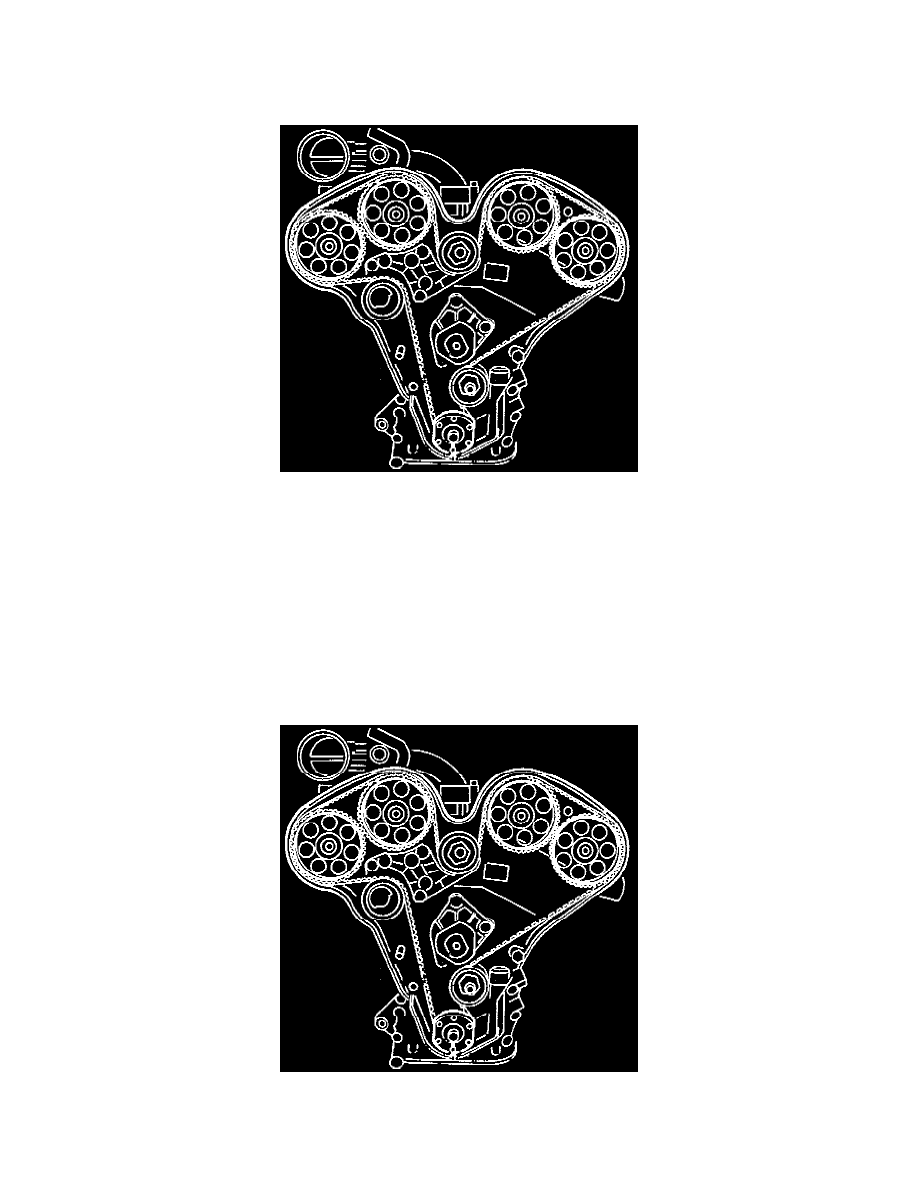900 SE Convertible V6-2498cc 2.5L DOHC (1995)

Timing Belt: Description and Operation
Camshaft Drive
Camshaft Assembly
Each cylinder head has twin overhead camshafts having a large-diameter base circle, providing a large amount of lift but little stress. All four camshafts
are driven by an internally-cogged belt with self-adjusting belt tensioner. The belt assembly also includes two eccentrically adjustable idler rollers.
The camshafts are direct-acting on the valves via hydraulic bucket-type tappets. The hydraulic tappets adjust automatically to differences in valve
clearance caused by variations in temperature. They operate in an oil bath, with oil supplied via an oilway in the cylinder head. The chief advantages of
hydraulic tappets are that they are silent in operation and extremely reliable. In addition, each cylinder head has two air purging nozzles to eliminate
tappet noise after starting.
The valves are of bimetal design with chromium-plated stems. The camshaft sprockets on the lefthand cylinder head are interchangeable as also are the
sprockets on the right-hand cylinder head.
Belt Tensioner
Of dynamic and adjustable type, the belt tensioner is mounted on the slack side of the internally-cogged belt. Once belt tension has been adjusted, it
tensions the belt continuously to compensate for belt wear.
